(Updated: March 2025)
You are preparing for the biggest meeting of your life. Your boss is demanding ad copy. Not just any ad copy.
It needs to amaze. Inspire. SELL!
Suddenly, sweat drips down your face. You’re slamming your keyboard now, desperately searching for help online. You are suddenly feeling very small.
Don’t worry. We got your back. We’re here to help (no sweat).
So why is ad copy such a vital part of online marketing?
Google is a blood-strewn battleground of competitors - you’ll need the right strategies to make it on top. Your job as a marketer is to crush those competitors.
How do you knock your competitors out of the way, you might ask?
You’ll need to be equipped with the right techniques to devise eye-catching ad copy that will stand out from the rest.
You’re not simply going to write great copy – you need to get into the shoes of your customers and understand everything that motivates them, drives them, and ultimately triggers them to make a purchase.
Let’s take a look at these steps that will act as your ad copy bible.
STEP ONE: Find and target your user’s objectives for Google Ads
STEP TWO: Nail the Headline
STEP THREE: Wow them with your description/body
STEP FOUR: Utilize emotional triggers
STEP FIVE: Importance of display URLs
STEP ONE: Find and target your user's objectives for Google Ads.
Understand your user inside and out. There are multiple types of people or personas.
Let’s go into detail here.
How do you figure out your user personas?
1. Do some market research.
You can gauge details of your user by using tools like surveys, interviews, and polls on social media channels.
Another way to find out details of your user is scoping out your competitors. How are they talking and interacting with their consumers?
2. Check your website’s analytics.
There is valuable data inside your site’s analytics. It reveals essential information for creating your personas like search terms that led them to your ad and what device they are used to get there.
Now that you found some pieces to your persona puzzle, let's build them out.
P.I.P.: Persona Identification Process.
Let’s engrave this process into your head, so whenever you need to understand your audience, the P.I.P. will easily guide you through it. The P.I.P. will include these components:
Name your persona
This will help you differentiate your multiple personas and build unique ad copy to fit each one.
Occupation
- What is their job title?
- What is their company like? (size, industry, etc.)
Demographics
- Age
- Gender
- Income
- Location
- Level of Education
- Family Size
Psychographics
- Primary and secondary goals
- How will you help them reach their goals
- Problems
- How will you solve these problems
- Interests
- Dislikes
Here’s an example persona for someone searching for “sell car.”
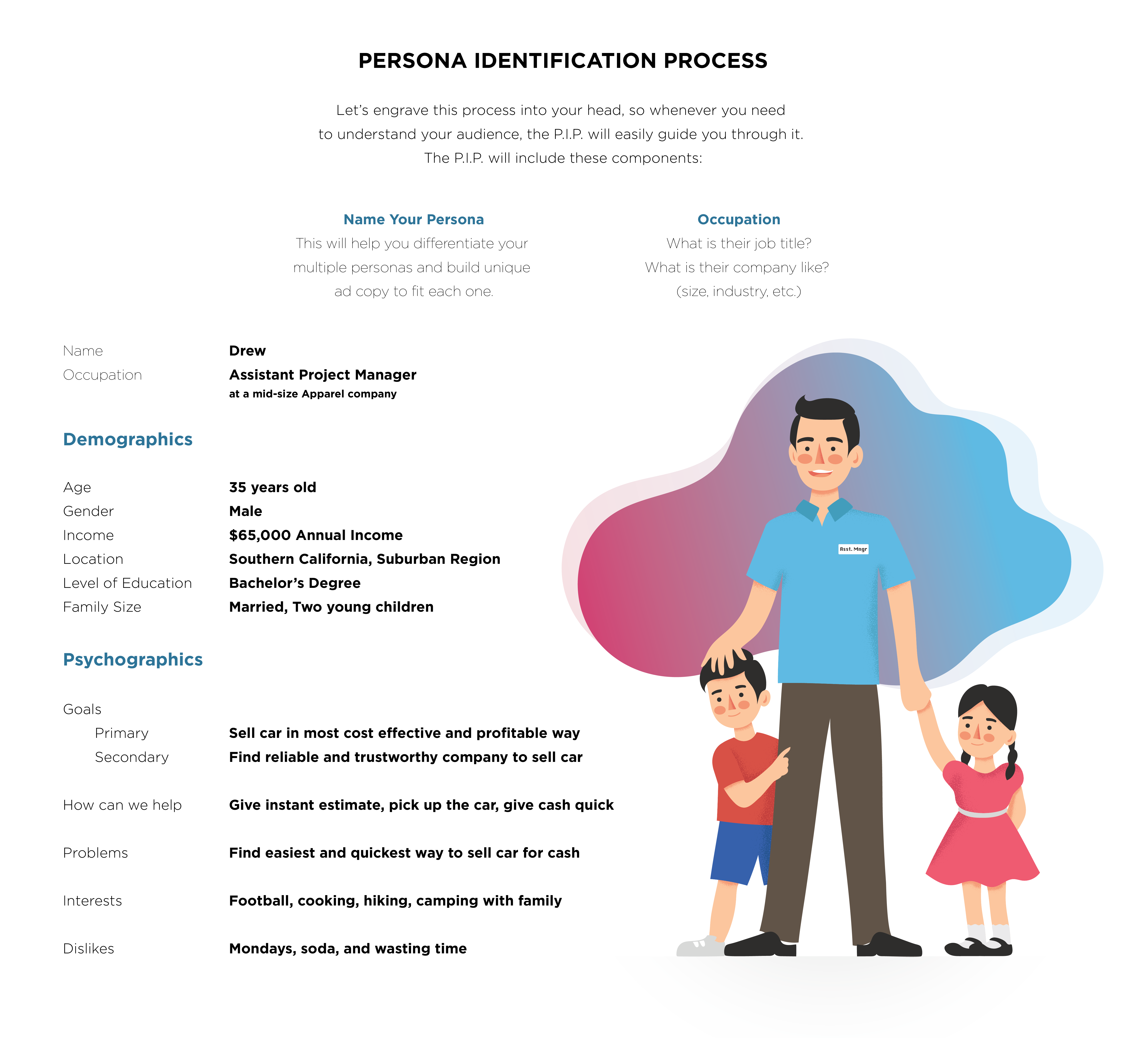
Name:
Drew
Occupation:
Assistant Project Manager at a mid-size apparel company.
Demographics:
- 35 years old
- Male
- $65,000 Annual Income
- Southern California, Suburban Region
- Bachelor’s Degree
- Married, Two young children
Psychographics:
- Goals: Sell a car in the most effective and profitable way
- Problems: Find the easiest and quickest way to sell a car for cash
- How can we help: Give instant estimate, Pick up the car, Give cash quick.
Now that you have this template for creating your personas, it will be much easier for your ad copy to cater to their exact needs.
Moving forward, let’s think of the five W’s (who, what, where, when, why) when analyzing this person.
“Who”- Who is this person? Think of their possible occupation, interests, dislikes, and so on. Drew is a 35-year-old man with hair quickly turning white due to his chaotic days with two young children. He’s a full-time worker and a full-time family man, facing various situations from day to day. His new big problem, sell his car.
“What” – What is their goal? Tap into what they are trying to achieve in the end.
Drew’s day usually includes work, taking care of the children, and spending time with the family, with no time to waste. His goal is to sell his car in the most immediate and profitable way.
“Where and When” – What device are they using when searching and where are they geographically located?
For Drew, he is searching for solutions mainly through his mobile device since he is always on the go, whether he’s at his son’s soccer practice or out for lunch with his co-workers. His geographic location is California, USA. You can now modify your ad copy to appeal to these aspects.
“Why” – This can be parallel to their goal, but let’s pinpoint why they are looking for a solution.
In Drew’s case, he is unfamiliar with the car-selling process and doesn’t know which service is the best. Therefore, he is searching for trustworthy guidance and a helpful hand (you.)
With the solid knowledge of your personas, let’s process that information into a personable ad copy.
Here’s an example of ad copy for “sell car.”

These two ads give the user easy-to-follow solutions to their problem of selling a car. The first ad gives concise answers
like: "Get An Instant Estimate, Pick Up Your Car, Get A Check."
Then guide the user into understanding how each persona has different 5x Ws and the ad copy should reflect that.
It simply tells the user that their company’s services will bring them to the end goal (get a check/money.)
These companies have a clear image of their user.
They are utilizing specific benefits like: "Get An Instant Estimate Now,” "Sell Car Quick," and "Highest Payout."
Each benefit fits the mold of the persona who wants to sell their car fast, hassle-free, and for good money.
STEP TWO: Nail the Headline.
Now let’s get into the greeter of our ad copy; the headline.
More people simply read the headline more than the body.
It is the first thing people see - make it memorable!
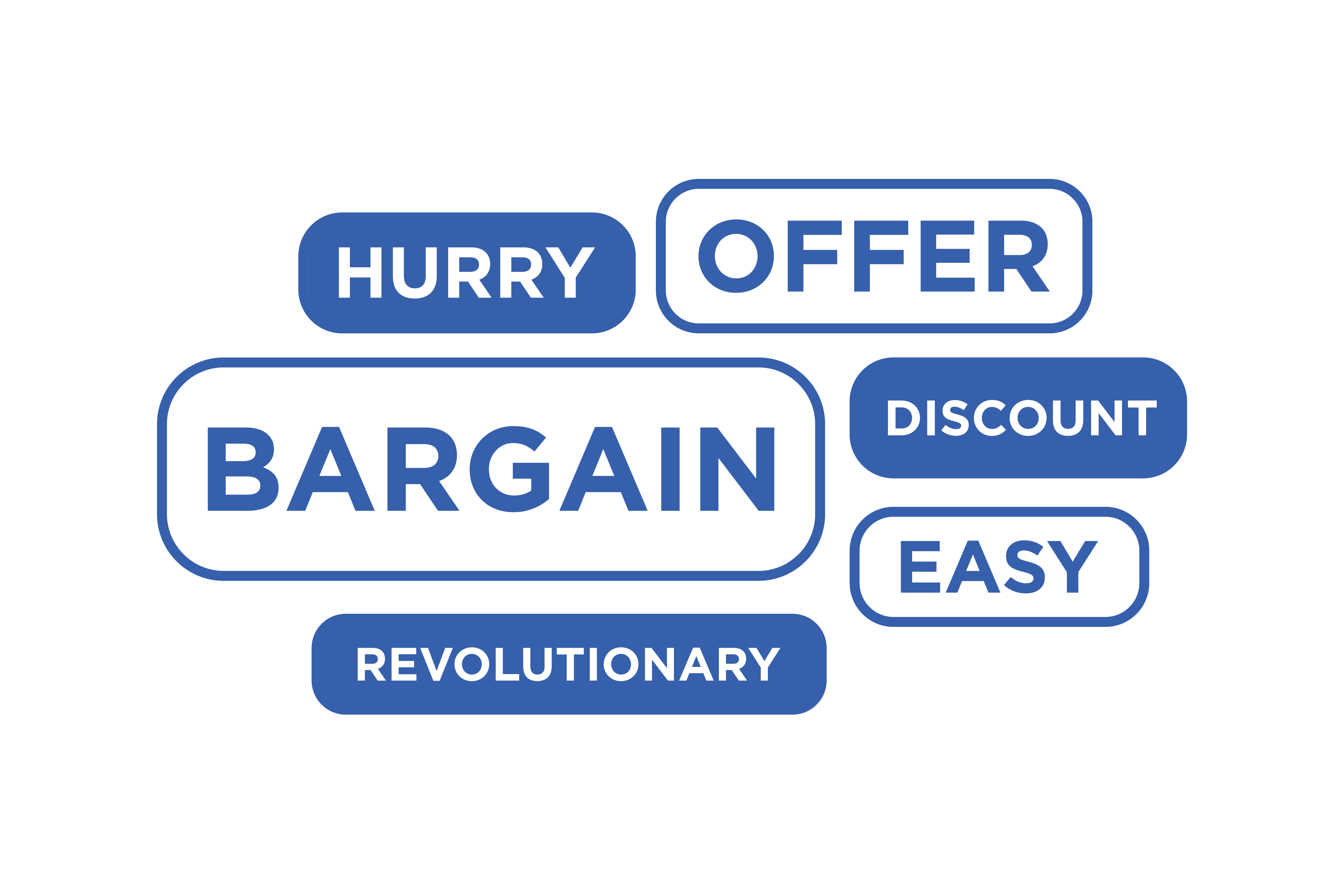
Hooks- Snatch the user’s attention with enticing hooks.
- What exactly is a hook? It’s something that grabs someone’s attention.
- The hook should explain the value of your offer, to make the user read on.
- Use grabbers like “Who else wants...” (implies an already existing desire) or “The secret of…” (instills that you are sharing insider knowledge)
Statistics & Numbers- Integrate this into your headline to differentiate yourself from other ads.
- This acts as strong, factual motivators to help your user believe what you’re selling.
- Numbers and statistics make users believe that your service is better than the competitors. Check this example out.
- A user is searching “photo prints” and multiple companies include stats in their headline.
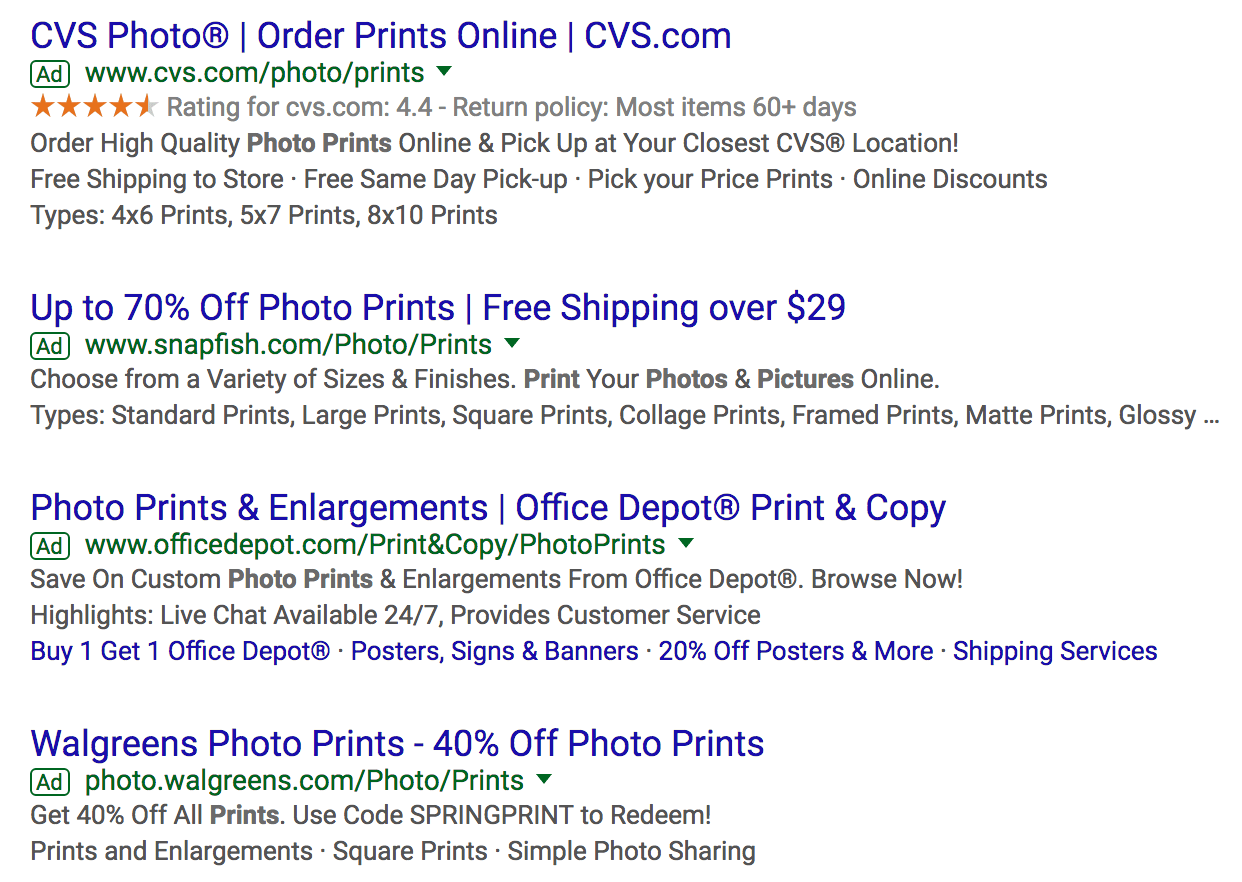
Snapfish strategically inserts “Up to 70% Off” to trigger the user to feel like they are getting a big discount.
Walgreens’ ad also states “40% Off Photo Prints,” implying that there is a special sale.
The majority of users comparing these four different services would easily pick Snapfish and Walgreens over the other two because of the simple inserts of percentages.
Wouldn’t you go for the ad with a sale going on?
Keywords- Incorporate your top keywords.
- Utilize your top-performing keywords in the headline so it appears in the searches.
- Be cautious and don’t spam the ad with these keywords.
Two words: Scent. Trail.
- What is this? When we use search engines, there’s typically a specific direction we’re looking to go. Users
then tend to engage most with ads that easily take you on the right path. - You want the headline to smoothly lead them to your description. Then the description should be the final push to have them click through.
Let me guide you through this example:
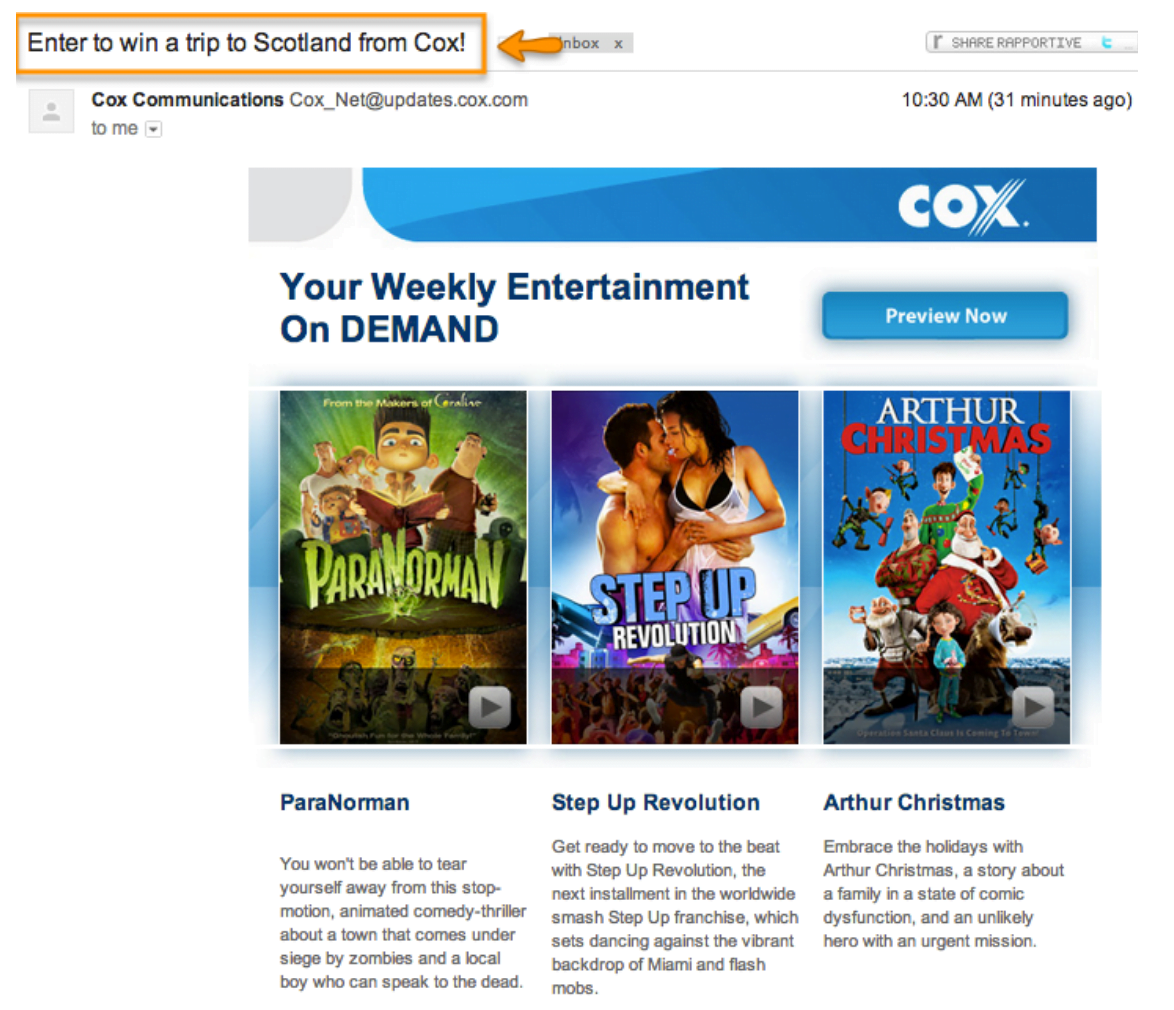
When you first look at the headline “Enter to win a trip to Scotland from Cox!,” you expect the body to be about how you can win a trip to Scotland, right?
Well… Clearly, there is no correlation between the body content and the headline.
This has no clear scent trail.
At this point, your user is confused and will immediately disengage.
Now let’s look at an ad with a good scent trail.

Here’s an ad for “makeup brush.” The headline clearly states what we are looking for, “makeup brushes & cosmetic brushes.” Now the user will want to continue reading.
This description is spot on with the topic and provides the user with the information they want, leading them to click through and continue shopping.
Learn more about the scent trail concept here: https://www.practicalecommerce.com/conversion-rate-optimization-scent-trail-or-primrose-path
STEP THREE: Wow them with your description/body.
Now that the headline is settled, let’s focus on the meat of the ad copy; the description.
A quick way to vamp up the first description line is to end with a punctuation mark.
- This grants the ad extra pulling power.
- If you use punctuation, it can elongate your headline when your ad places in the top three spots.
Next, promote readability.
- Utilize easy to comprehend, short, and broken sentences.
Check this out, what ad is easier on the eyes?

OR

The first ad has short, simple sentences like “Price Guarantee. No Cancellation Fee.”
It’s quick to read and straight to the point.
The second ad looks a little more clustered and makes it harder on the eyes since it looks like a big chunk of text.
With that said, try to stay away from chunking up your text.
Next, focus on your benefits.

Tell them how your brand/product will improve their lives:
- The user only cares about how you can make their lives easier.
- Again, apply stats and #s when possible.
- Be specific on how you will help them, don’t be too vague.
Be personal; use “you”:
- You are talking directly to the user.
- This gives off a friendly and intimate attitude.
- Make them feel like they have a relationship with you and can trust you.
Include converting keywords in the text:
- Just like in the headline, target those high-performing keywords and integrate them into the text.
- Again, be aware of spamming the text with keywords.
The order of the text matters as well:
- The most important information should be at the front and the least important should be at the end.

- In the example above, this ad description is structured well since the first sentence captures the user’s attention with clear information about the makeup brushes they offer.
- The next sentence is a call to action which should be at the end.
STEP FOUR: Utilize emotional triggers
Emotions are vital components to making strong ad copy.
Use anger, disgust, excitement, fear, etc. to get a powerful response.

We have to understand that most consumers are driven by emotion, not just logic.
- The use of emotions like belonging should make them feel like they are part of something bigger.
- The emotional trigger of fear should instill a sense of danger if they do not take action.
Overall, make the user feel something, allowing them to connect with you.
Triggers- Research what triggers your targeted user.
- Think about the specific details of your personas.
- Envision what emotions will work best with them, based on their personalities.
- Considering what service or product you’re offering, you can choose emotions based on that as well.
- Remember what you include in your ad can trigger them to feel a specific way.
- The trigger will lead them to have an emotional reaction and click through.
Here’s an example: These two ads are both for “Hydroflask.”
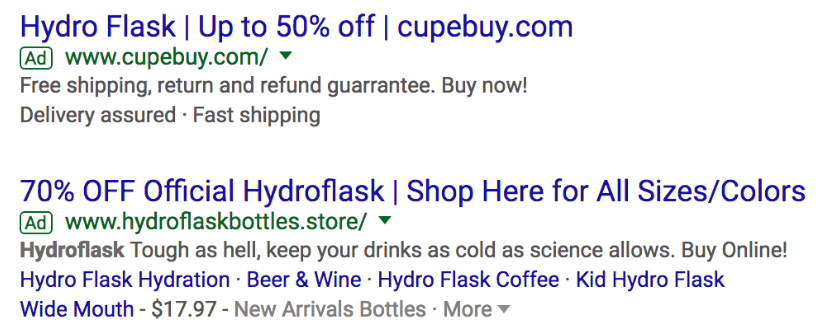
The first ad copy is extremely bland and has no emotional connection, whatsoever.
However, the second copy uses strong emotions with punch words like “tough as hell” and keeps it personal by using “your.”
The ad leaves a lasting impression unlike the other.
This makes the ad copy highly compelling.
An important emotional trigger you need to know: FOMO

FOMO = fear of missing out
This emotion causes a sense of feeling left out or missing out on something important.
The result of this emotion is the act of them engaging in your ad.
- This is a type of loss aversion to persuade users to convert
A simple way to implement FOMO is a countdown timer; run in real time.
- The timer provides a sense of panic and time running out.
- By instilling time limits, the user thinks they will lose out if they don’t act now.
Other tactics include copy like: “Sale is almost ending, only one hour left”
- Creates fear of missing out on opportunity
- Adding text like "low on stock” or “almost sold out” relays powerful emotional reactions.
STEP FIVE: Importance of display URLs
You want unique, keyword-rich display urls.
What are display URLs?
- The display URL is the URL shown in your ad.
This URL obviously shows the user that they will be sent to a landing page on hotels. It can be different from the destination URL. When utilized correctly, it can improve click-through rates.
Display URLs serve two purposes: Be something more related to the ad copy subject AND contain your top keywords. You can include top keywords in display URLs even if it’s not included in your destination URL. If the URL is specific to the user’s desire, it will make them believe the landing page will take them to what they’re looking for. It also adds a sense of organization and assurance.
Here’s an example of a display URL: www.doglovers.com/dog-food/beef
This tells the user they will be directly led to a landing page for dog food categorized under beef.
You made it.
We reached the end of the learning process, but you’re not done yet.
What should you do now?
The best way to engrave these killer steps would be through practice.
- Use this template to practice:
jetfuel.agency Google Ads Ad Copy Template
After practice, we need to TEST, TEST, TEST!
The most important thing to do now is to test your ads. You’re now ready to write compelling and strategic ad copy, but now we need to figure out which is working.
- Ad copy takes multiple tries to get it right and the only way to hit the jackpot is by testing them.
- Take this to the A/B testing stage.
- A/B testing various ads will allow you to determine which tactics are successfully working for your campaign.
Now, the next time you’re asked to take on an ad copy task, relax and tap into your brain. Use these valuable steps to help navigate your way and you’ll be deemed as the next ad copy king/queen.
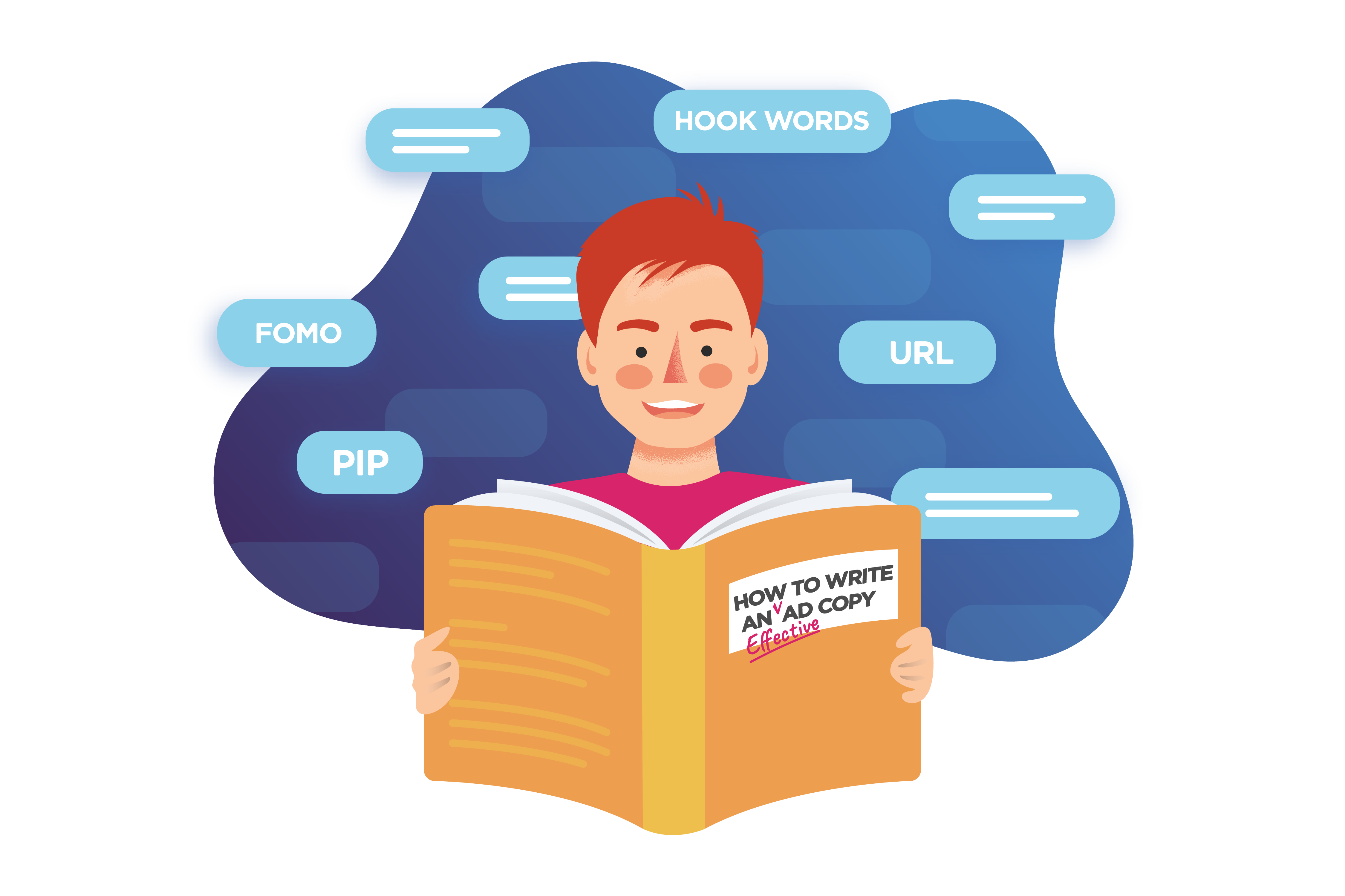
Take Your Google Ads to the Next Level
If you’ve made it this far, congratulations—you’ve just absorbed a masterclass in writing compelling ad copy. From crafting the perfect headline to leveraging emotional triggers, you’re now armed with the knowledge to create ads that captivate and convert.
But let’s be honest—Google Ads is an ever-evolving game. What worked yesterday might flop tomorrow. Staying on top of trends, testing new angles, and constantly refining your approach is the key to maintaining success. That’s where it gets tricky. The truth is, writing killer ad copy is just one piece of the puzzle. Getting the strategy right, targeting the right audiences, and optimizing your spend—that’s a whole other challenge.
That’s where jetfuel.agency comes in. We specialize in high-impact PPC campaigns that are data-driven and results-oriented. Whether you’re looking to build brand awareness, drive conversions, or dominate your niche, our team has the expertise to make it happen. We take the guesswork out of Google Ads, crafting campaigns that maximize your ROI and minimize wasted spend.
Stop leaving money on the table. Connect with us today and let’s make your Google Ads work harder, smarter, and better. Your next ad copy masterpiece—and the results that follow—are just a click away.
